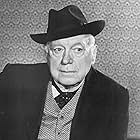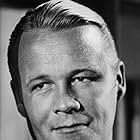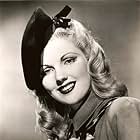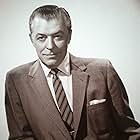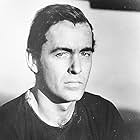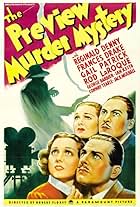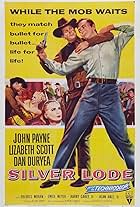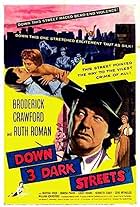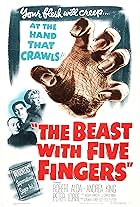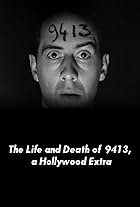Martin is a wounded gangster comforted by a visits from a little girl and her tiny dog with one bad eye. As he hides out, he makes plans to find his abusive, double crossing, partner.Martin is a wounded gangster comforted by a visits from a little girl and her tiny dog with one bad eye. As he hides out, he makes plans to find his abusive, double crossing, partner.Martin is a wounded gangster comforted by a visits from a little girl and her tiny dog with one bad eye. As he hides out, he makes plans to find his abusive, double crossing, partner.
Jimmy Little
- Captain of Police
- (as James Little)
Davison Clark
- Stage Doorman
- (uncredited)
John Doucette
- Police Detective
- (uncredited)
Milton Kibbee
- Landlord
- (uncredited)
- Director
- Writers
- All cast & crew
- Production, box office & more at IMDbPro
Storyline
Did you know
- TriviaIn the story on which the film is based, Johnny One-Eye is a cat rather than a dog.
- GoofsIn one scene the Empire State Building is shown under construction in the background. Yet the film is set in the 1950's and the Empire State Building was completed in the 1930's.
Featured review
The title character is a mutt, and the story comes from the flamboyant pen of Damon Runyon. That's hardly the recipe for a moody, offbeat crime story, but Robert Florey, perhaps drawing on his French roots, adds that little je ne sais quoi and comes up with a casserole a cut above the ordinary. It's not quite a success but an honorable and occasionally arresting try.
Runyon is best remembered for his sentimental yarns about Broadway, that garish gulch that disrupts Manhattan's tidy grid - stories of gold-diggers and raffish sportsmen, of old silver-tongued sots and big bruisers with 24-karat hearts. But he told more downbeat tales as well, as evidenced by Johnny One-Eye, where Florey more skillfully modulates the movie's dark tonality than did Irving Reis in The Big Street, with Lucille Ball and Henry Fonda, another of Runyon's more shadowed stories (perhaps Reis was overruled by Runyon, who acted as producer).
Save for Pat O'Brien, Florey's smallish cast is nowhere near the caliber of The Big Street's (its next most recognizable member is Wayne Morris). Partners in petty crime years ago, O'Brien and Morris whacked a double-crosser and tossed his body off the Staten Island ferry. Since then they've drifted apart and gone legit, with O'Brien now occupying a pinnacle not only on Park Avenue but in the city's power structure as well.
We get only a brief glimpse of his affluence and influence, however, in a scene where he brings hookers to his penthouse to pair off with politicos. An epicene blackmailer (Lawrence Cregar) working for Morris cuts short the festivities by calling down a police raid. O'Brien flees out into the city's meaner streets with only one mission - to find Morris and exact his revenge. He catches a bullet along the way, and holes up in a condemned brownstone in the Village, where he meets up with the poor mutt, Johnny One-Eye.
Here the plotting plummets into the, well, Runyonesque. The dog belongs to the little girl of Morris' mistress (Dolores Moran), thus becoming the canine link which fatally reunites the old partners. Enough said, except to note that the tot (Gayle Reed) will harden the warmest of hearts, suggesting the least endearing attributes of Shirley Temple as Little Miss Marker, another of Runyon's creations.
Florey can't quite toss out all the aggressively poignant slop - if he had, there would have little left to work with - but he accentuates the noirish elements (he had just directed John Payne in The Crooked Way, one of his more solid credits). During O'Brien's wounded, nocturnal flight, the skyscrapers loom like jagged black precipices. And the scenes in the abandoned town house, where he's visited by the little girl, bring to mind, in their sense of menacing isolation in the middle of a teeming city, Ted Tetzlaff's The Window, a hit of the previous year. (There's also a freighted scene with a boozing veterinarian that looks forward to a similar one in Andre De Toth's Crime Wave four years later.) Sad that Florey was relegated to nothing better than the Bs (even to the Bs among the Bs); given better material and looser budgets, his distinctive touch might have grown into a major talent.
Runyon is best remembered for his sentimental yarns about Broadway, that garish gulch that disrupts Manhattan's tidy grid - stories of gold-diggers and raffish sportsmen, of old silver-tongued sots and big bruisers with 24-karat hearts. But he told more downbeat tales as well, as evidenced by Johnny One-Eye, where Florey more skillfully modulates the movie's dark tonality than did Irving Reis in The Big Street, with Lucille Ball and Henry Fonda, another of Runyon's more shadowed stories (perhaps Reis was overruled by Runyon, who acted as producer).
Save for Pat O'Brien, Florey's smallish cast is nowhere near the caliber of The Big Street's (its next most recognizable member is Wayne Morris). Partners in petty crime years ago, O'Brien and Morris whacked a double-crosser and tossed his body off the Staten Island ferry. Since then they've drifted apart and gone legit, with O'Brien now occupying a pinnacle not only on Park Avenue but in the city's power structure as well.
We get only a brief glimpse of his affluence and influence, however, in a scene where he brings hookers to his penthouse to pair off with politicos. An epicene blackmailer (Lawrence Cregar) working for Morris cuts short the festivities by calling down a police raid. O'Brien flees out into the city's meaner streets with only one mission - to find Morris and exact his revenge. He catches a bullet along the way, and holes up in a condemned brownstone in the Village, where he meets up with the poor mutt, Johnny One-Eye.
Here the plotting plummets into the, well, Runyonesque. The dog belongs to the little girl of Morris' mistress (Dolores Moran), thus becoming the canine link which fatally reunites the old partners. Enough said, except to note that the tot (Gayle Reed) will harden the warmest of hearts, suggesting the least endearing attributes of Shirley Temple as Little Miss Marker, another of Runyon's creations.
Florey can't quite toss out all the aggressively poignant slop - if he had, there would have little left to work with - but he accentuates the noirish elements (he had just directed John Payne in The Crooked Way, one of his more solid credits). During O'Brien's wounded, nocturnal flight, the skyscrapers loom like jagged black precipices. And the scenes in the abandoned town house, where he's visited by the little girl, bring to mind, in their sense of menacing isolation in the middle of a teeming city, Ted Tetzlaff's The Window, a hit of the previous year. (There's also a freighted scene with a boozing veterinarian that looks forward to a similar one in Andre De Toth's Crime Wave four years later.) Sad that Florey was relegated to nothing better than the Bs (even to the Bs among the Bs); given better material and looser budgets, his distinctive touch might have grown into a major talent.
Details
- Release date
- Country of origin
- Language
- Also known as
- Duell mellan gangsters
- Filming locations
- 915 3rd Avenue, Manhattan, New York City, New York, USA(Martin looks into the window of Clarke's Café & Restaurant - still in operation as P.J. Clarke's as of 2024)
- Production company
- See more company credits at IMDbPro
- Runtime1 hour 18 minutes
- Color
- Aspect ratio
- 1.37 : 1
Contribute to this page
Suggest an edit or add missing content









